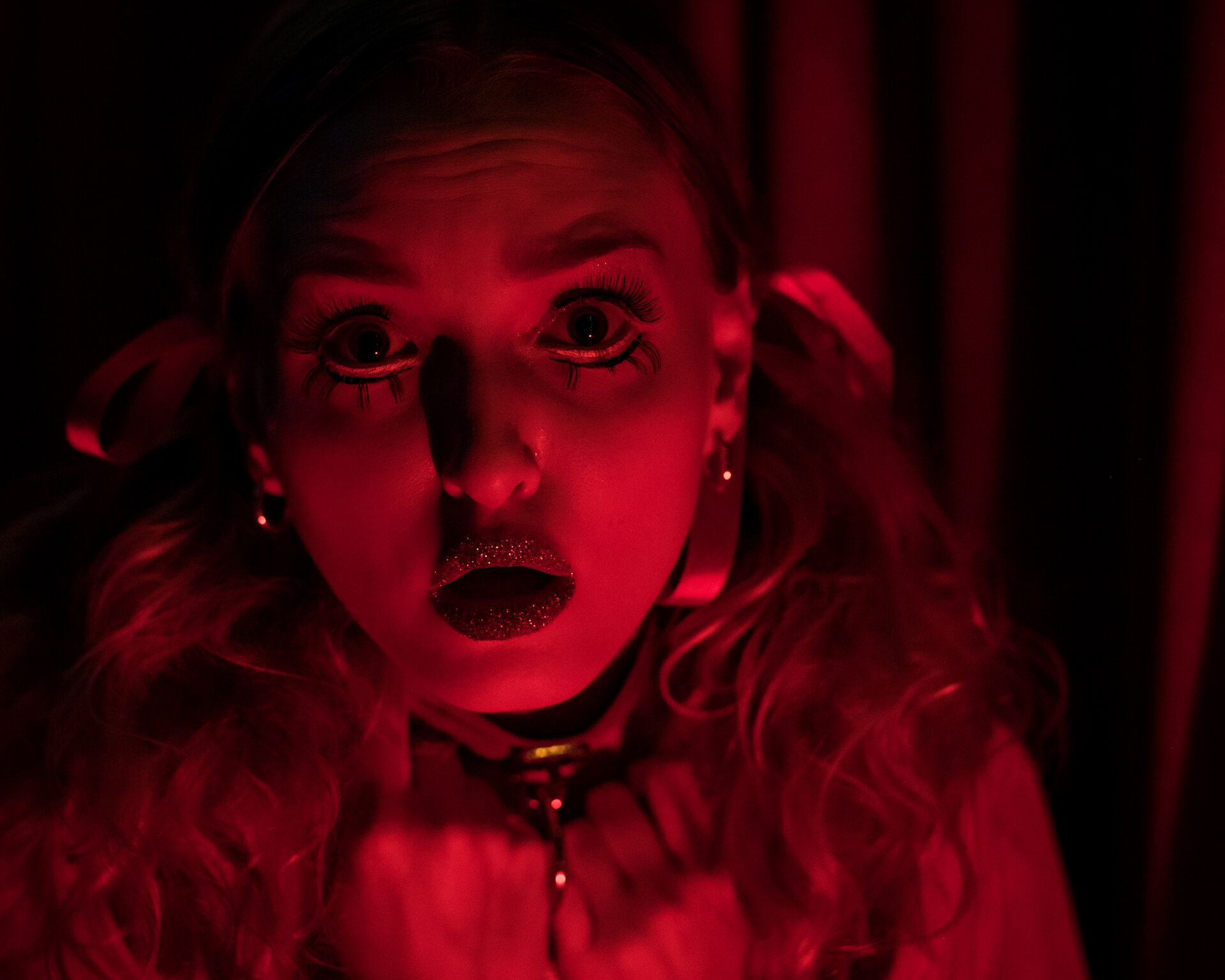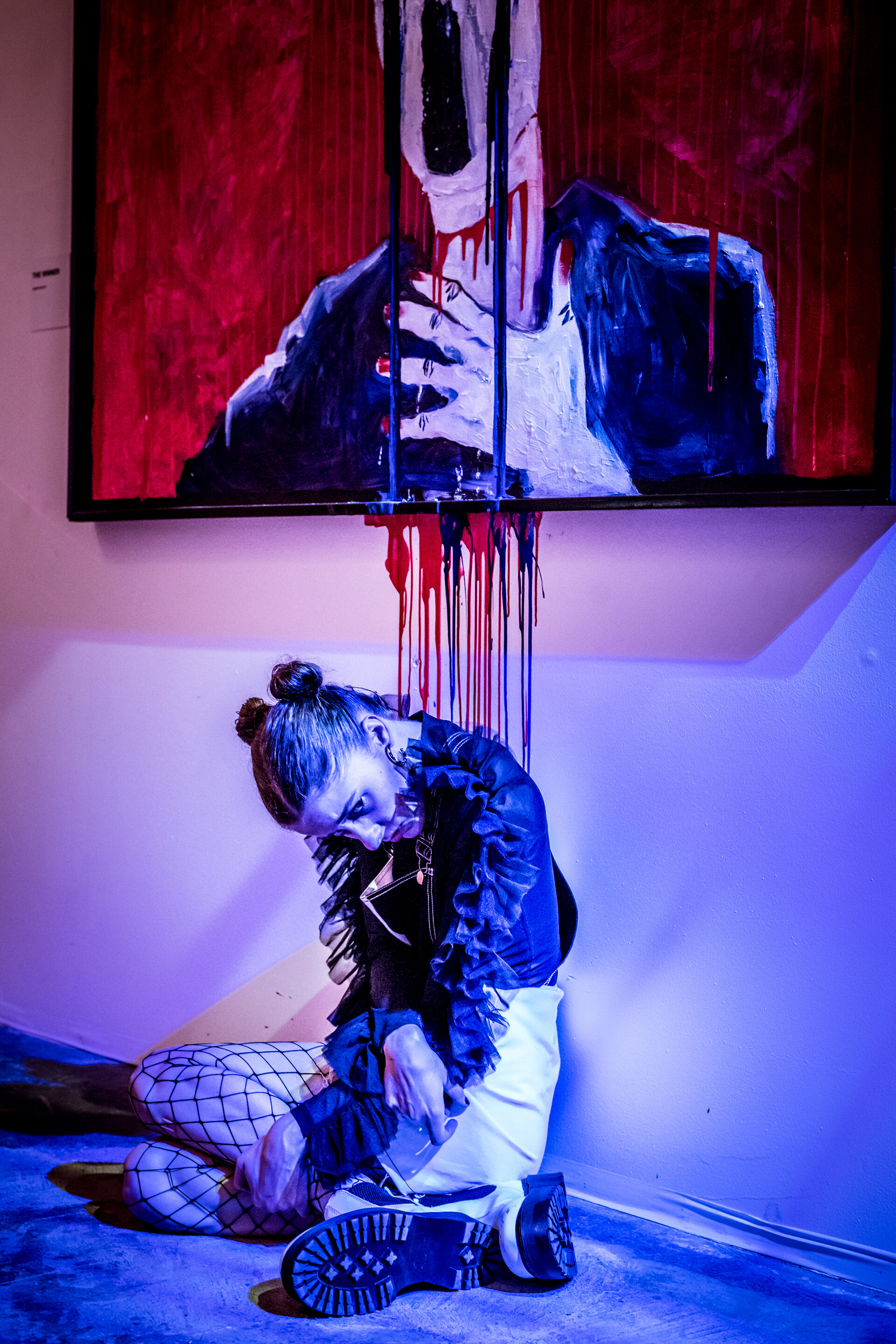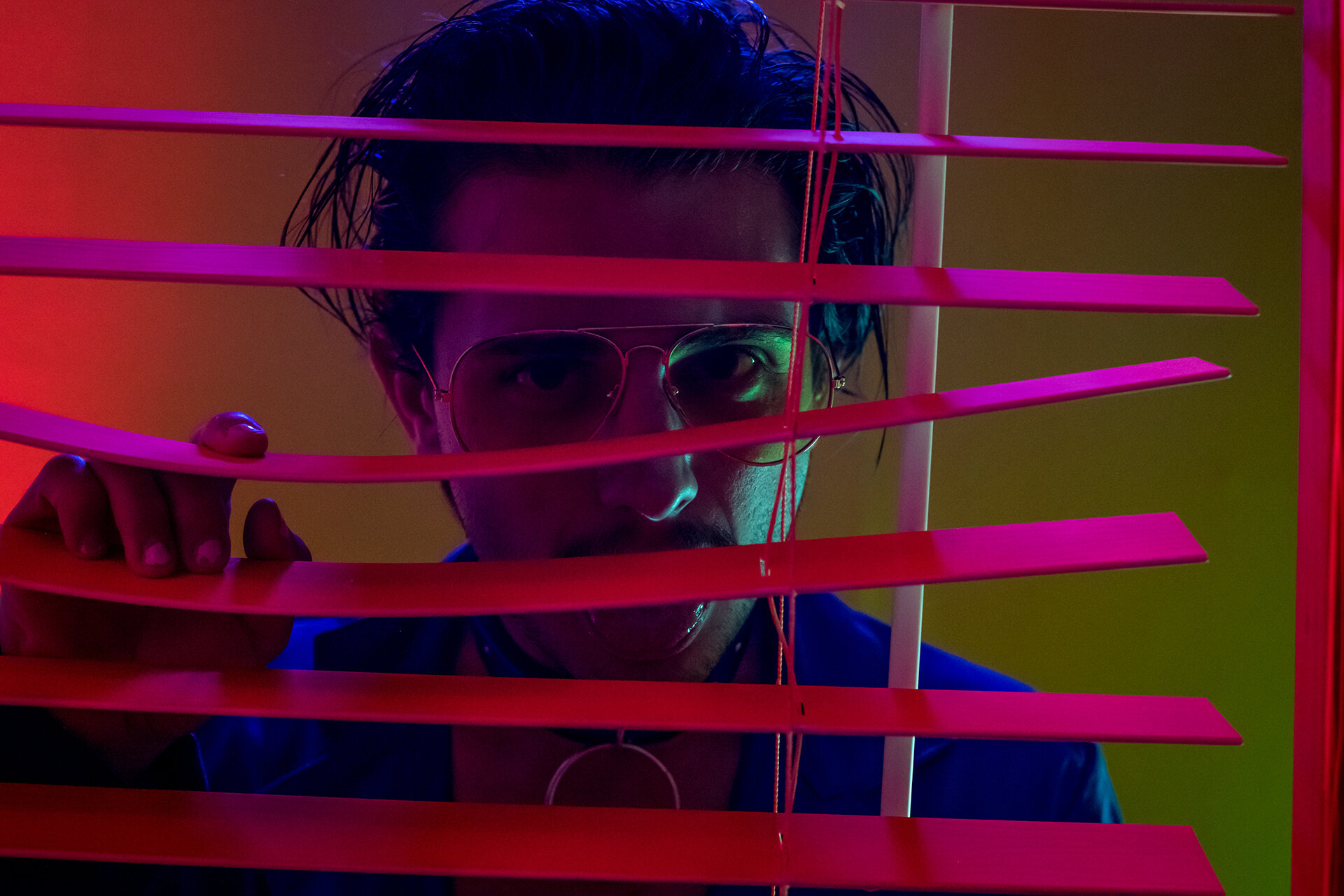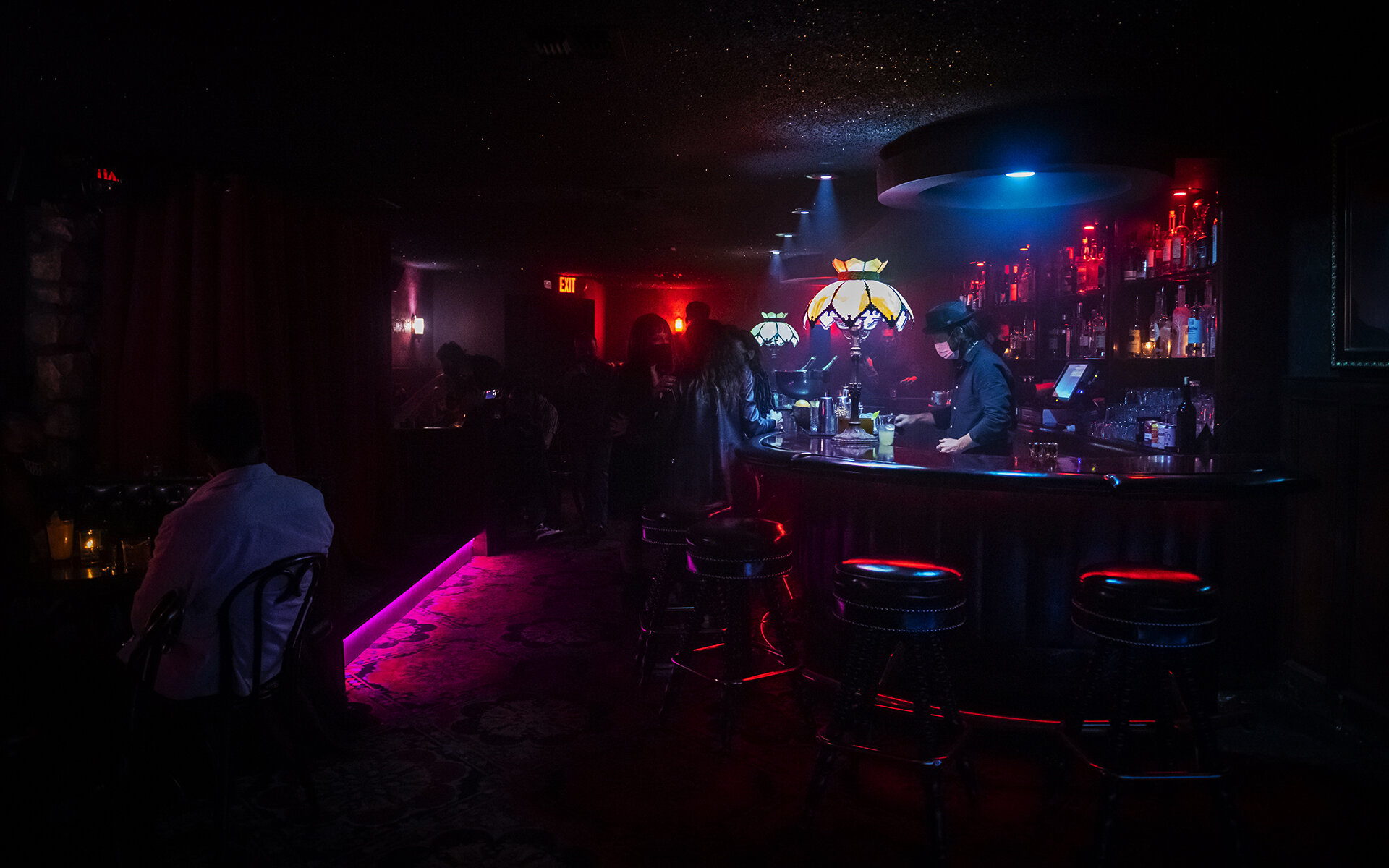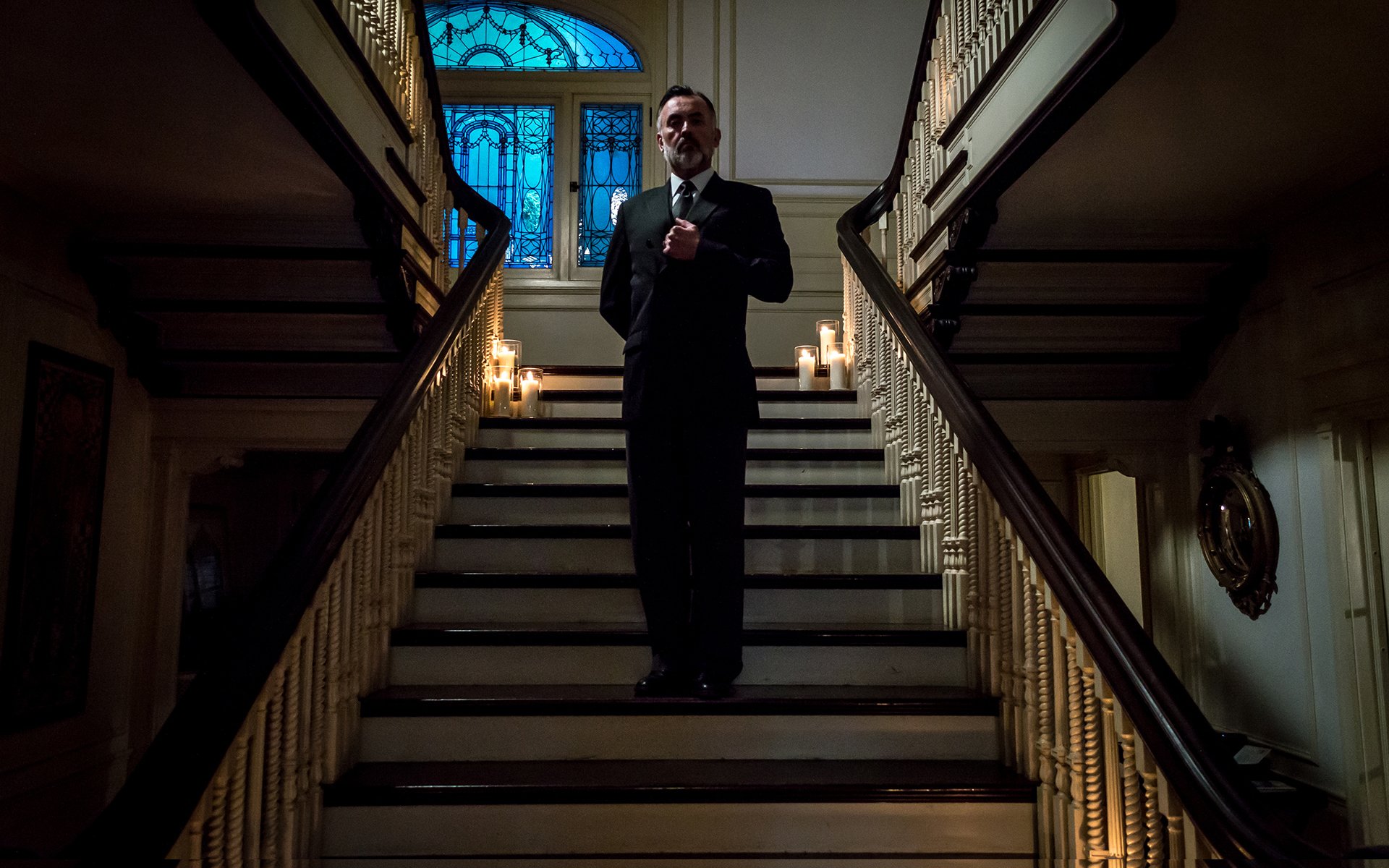Haus of Creep Review

Row DTLA, Los Angeles, CA
Creep L.A. has always been an haunting, multi-layered, multi-path immersive theater experience that explores thought-provoking themes and creates viscerally intimate interactions. Produced each fall by Just Fix It Productions, the creators of another critically acclaimed, annually recurring immersive theater show in the form of The Willows, Creep brings a more cerebral and psychologically punctuating brand of haunt to the autumn season. Low on jump scares and high on eerie torment, this is an event that begs multiple experiences to truly saturate oneself in the full story and all of its branch lines.
We’ve only recently gotten in to Creep at Westcoaster, first visiting their Lore installation as guests two years ago, and then doing Creep: Awake last year as guests and as media. But we’ve quickly fallen in love with their methodical brand of horror that touches upon spiritual, psychological, and emotional planes. Going through a Creep event can be disturbing and thrilling and confusing and cleansing, all at once. But it’s always unforgettable.
This year, Creep takes on the social media-driven culture of pop-up museums and puts its own crimson tinge on the medium. Blending elements of art, horror, suspense, and mystery, Creep LA presents a unique, free-roaming adventure in the form of Haus of Creep, a museum that hides deathly and shocking secrets behind its unique display of artistry.
This Is Directionless Art
Unlike past Creep L.A. shows that have a clear order to how to proceed, Haus of Creep offers a much more independently guided experience that is free-flowing. If you’ve done immersive theater in New York, the experience here can best be compared to Sleep No More. You have come to the newest institution of culture, an open gallery put on by The Company. There’s a space, and there are players, and there are scenes, but there is no particular order to them, and you must navigate the spaces on your own.
At points throughout the night, certain developments will reveal themselves. Guests and actors converge several times upon a central gathering space called The Core to progress the beats of the plot. But between them, the stage is ripe for untethered exploration. This may seem confusing for the uninitiated, but it is intentional. Haus of Creep turns conventions upside down. It requires a commitment from the you in order to unlock its most rewarding experience. Walk. Conversate. Probe. There are no rules.
Well, there’s one rule: never walk through a closed curtain or a velvet rope.
(Photo by Hatbox Photography and courtesy of Just Fix It Productions.)
This Is Intimate Art
Those curtains? They hide things. They conceal close encounters and miniature shows. They bear experiences that don’t seem to connect to the main story, but which bear out disturbing moments that underscore the sense of unease pervading the entire air. Perhaps it’s a gleeful birthday party, or an inappropriately depraved puppet show. Or maybe it’s just a private tour through the back recesses of the gallery.
These transitory junctures reveal details and information amongst the characters, and amongst the art. They infuse tragedy into the show. They hint at, and then viciously abrade the dark, sulking truth of this Haus, underneath the control that the curators attempt to maintain.
You don’t always have the ability to choose when to engage these sessions. Sometimes you are picked. Other times, you can jump in. But try to maneuver your way into as many of these sidebars as you can. They only serve to reveal more into the recesses of this exhibition.
(Photo by Hatbox Photography and courtesy of Just Fix It Productions.)
This Is Living Art
We know museums to be generally static ventures, with exhibits placed clearly and presently for guests to behold and analyze and draw interpretation and inspiration. But what if the art was not so still? What if it was moving, evolving, responding… even breathing?
That is the concept at Haus of Creep, where what is on display is people themselves. Yes, there are static pieces—paintings and sculptures and activations that beg attention. But the real treasures of this macabre museum are the bizarre, unnerving, sensual beings who can interact, converse, and reveal back to the observer.
Interaction and conversation is key. Talk to a piece, and she or he may concede backstory or plots or nightmares. There’s an overarching story that ties into the evening experience, but its richness won’t reveal itself unless engaged.
(Photo by Hatbox Photography and courtesy of Just Fix It Productions.)
This Is Captive Art
Haus of Creep is a 75 minute experience within a 5000 square foot exhibit space, and once inside, you will find that there are no doors out. For the next hour plus, you are as entrapped as the human art exhibits paraded around you.
All of this is an allegorical study of today’s meme culture, social media influence, and proliferation of pop-up attractions to take advantage of our displays. Is art meaningful, or is it simply meant to be shown off? Are guests as patrons enslaved to their phones, or their online personas, or the facade they project to others to pass off perceived richness in their lives? Is there depth in today’s society when so many seem to exist to simply show off the next photo of their next amazing experience?
Haus of Creep encourages this. There are photo booths scattered throughout the museum and lounge space, playing the dual role of allowing real life social media sharing and also the kayfabe role of showcasing the appreciation of art. Some of the characters will even lead people to the booths to snap a photo for posterity. This offsets the somewhat ironic ban on personal smartphone and camera use, but perhaps that is the point. Art, freedom, and control are key themes in Haus of Creep, and it’s only fair that these carousel across the guests as well.
But this begs the question: who is really trapped here—the human art subjects, or the guests who can only gain gratification through the bordered selfie that is meaningful only when shared?
(Photo by Hatbox Photography and courtesy of Just Fix It Productions.)
(Photo by Hatbox Photography and courtesy of Just Fix It Productions.)
This Is Evolving Art
Stop by an exhibit. Take it in. Let it envelope and touch you. And then, come back later, because you will see that it has changed. Not unlike the portrait of Dorian Gray, Haus of Creep takes on an increasingly more sinister and nefarious character as the evening progresses. Hidden layers become not so hidden. What is in a box becomes unleashed. The true nature slowly unravels as you plunge deeper and deeper into the art.
It is not only the living art that changes through its motions. Analog art evolves as well. The Body is a moody, abstract piece that conveys violence in its material texture. Come back later, and there might be an actual body there. Boppo’s Black Box is passed off as a black wall at first—a two dimensional box in some avant garde style that commentates by way of minimalism. But it turns out the Black Box is actually a theater, and what appears to be an innocent marionette quickly becomes sadistic and sexual. Peek into Peepshow and observe characters in voyeuristic states. Don’t worry, later, they’ll be openly observing you.
(Photo by Hatbox Photography and courtesy of Just Fix It Productions.)
This Is Layered Art
In most theatrical experiences, there is a clear distinction between audience and actor. It is often the literal proscenium. But is also typically in the character roles and the clear delineation between someone playing a part and someone simply observing and reacting to it.
Haus of Creep blurs those distinctions. There are several general categories of players here, in addition to the guests themselves. One set works for The Company—characters like the suave operator, Cash (Justin Fix himself); peppy tour guide, Becca; the helpful media manager, Peter, among many others. One set is commissioned by The Company—the artists Clarissa Hawkins, Rosay Ratcheté, and Cameron. One set is owned by The Company—the living art like the provocatively feral Machine, the silently tragic Mr. Happy, the piercingly prescient Number 13, the sensuous Kit Kat (the most expensive piece of art in the gallery, entitled Cheap Thrill), and more. And one set blends in as guests themselves… the intense art critic, Mona; the innocently optimistic and embracing enthusiast, Sooky; and the arrogant and vapid influencer, Chelsea.
It’s not necessarily clear who is guest, and who is actor, and who is supervising—mostly because those roles are blended together. Add to this the style of the actual guests—many of them clearly embodying the hip L.A. scene—and the separation between reality and artistry truly starts to blur. And that’s the point. Despite satirizing the superficiality of today’s web-fueled, short term art culture, Haus of Creep maintains a remarkable complexity and depth in its cast and characters and their synergy with the audience.
(Photo by Hatbox Photography and courtesy of Just Fix It Productions.)
This Is Deadly Art
This is immersive theater, and it’s a haunt in the non-traditional sense, of course, so it would not be complete without some intrigue and some horror and some seductive scares. As the passing of the night dredges up new events and new revelations, it might become apparent that someone is puppeteering the strings to this inter-connected story. The living art may want to rebel from its harnesses, but The Company won’t want to have it this way, and it is not above marking lives dispensable to maintain this control.
Everything comes to a head at the end of the experience, when the grand reveal of the true masterpiece is shown. Suddenly, the details that look like isolated moments of disturbance all throughout the evening connect together in a jarring string of carnage. You’re lead out of the Haus, but not before witnessing the fate of those involved in this production. It’s a powerful moment—one that may very well shake the foundations of what had been assumed throughout the night. But in retrospect, it all makes so much sense. Art is life, and life is art. If art can be created, it can also be destroyed. But if art is part of a superficial display, perhaps true art is what unravels the strings holding everything up.
You leave with questions and breathless wonder, and you try to process the past hour and fifteen minutes. You talk with fellow guests, and perhaps take more photographic souvenirs at one last photo booth. Like all museums, there’s a gift shop, ripe with JFI Productions merchandise. And you ask yourself… just what happened in this chilling creep couture?
(Photo by Hatbox Photography and courtesy of Just Fix It Productions.)
If past Creep productions haven’t made it obvious, guests will need more than one trip to fully appreciate and understand what happens in Haus of Creep. And unlike its predecessors, Haus of Creep may require more than two or three treks. Each experience is entirely unique, and guests will gain as much as what they put in. From group activities to one on one encounters to odd ceremonies and engaging installations, Creep offers up a trove of experiences that run in amazingly fluid synchronization. It’s a haunting, evocative show—one that challenges and embraces its biggest fans—and one that certainly should not be missed this Halloween season. And certainly, it has the legs to stand past the spooky season and incur an extended or recurring run, if the producers want it.
Haus of Creep continues to run Wednesday through Sunday nights from now through November 3rd. Tickets are still available, and while the price is a bit steep, the quality of the experience is very much worth it. Just bring an open and inquisitive mind and a penchant for participating. Haus of Creep will still progress without it, but it is all the more gratifying with every added level of commitment. And who knows… maybe you can even become part of it all—the maker and/or the subject of the art!
Architect. Photographer. Disney nerd. Haunt enthusiast. Travel bugged. Concert fiend. Asian.
